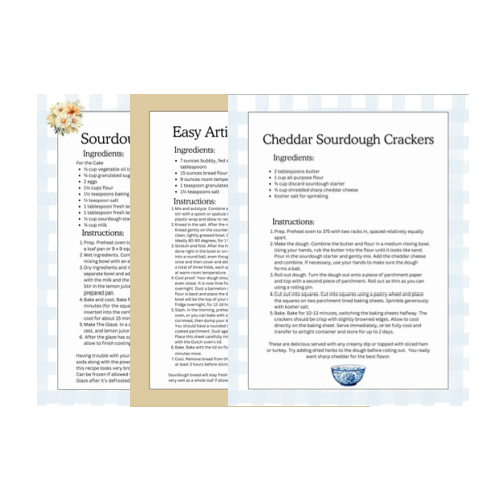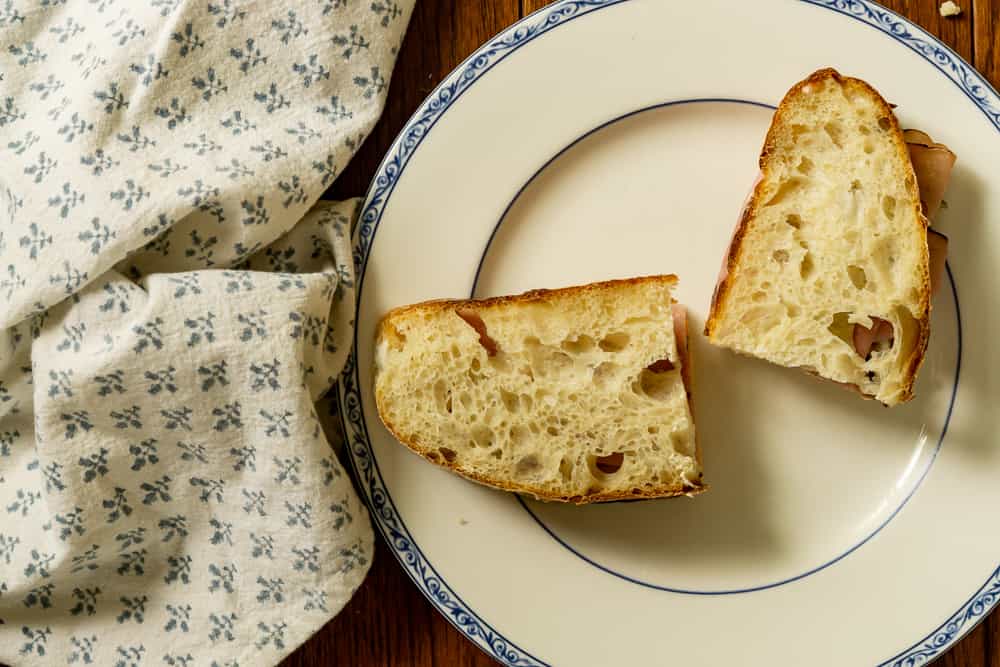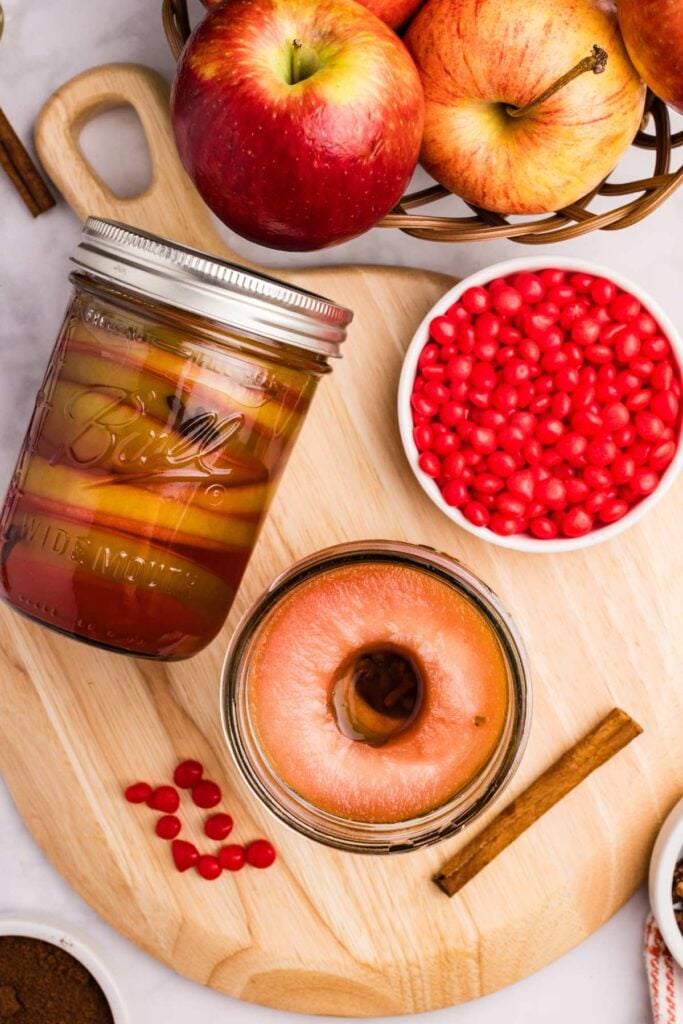Inside: A look at common sourdough problems and some possible solutions to troubleshoot your sourdough bread.
Of all the things in the kitchen that are finicky and unpredictable, sourdough might be number one. You can follow the exact same technique and even weigh things precisely and come out with different results. It’s just how it is.

Part of it is the state of your starter. It may be the temperature of your kitchen. And sometimes it is just the bread gods. But there are also things that you can control to affect the success of your sourdough baking. Here are some of the most frequent problems that occur with sourdough bread and some possible answers.

Get a Free + Pretty PDF Recipe Book
Sourdough Sunday Newsletter

Every Sunday evening I’ll send you a sourdough recipe to make that week, straight from my kitchen to your inbox.
And as a thank you for signing up, I’ll send you this e-book with beautiful printable recipes right away. Simple!
You will not be added to any other email lists or my daily newsletter. But if you’re already on my newsletter, you’re welcome to join and receive both.
Why didn’t my sourdough bread rise?
A common question with a lot of answers.
There are two big possibilities: either your starter is not healthy, or conditions were not right.
Your starter should look very vigorous and should have been fed a few hours before baking with it. There should be obvious bubbles and a lot of activity when you peek in. If your starter is young (less than one month old), it is probably not ready to bake a full loaf with by itself. Add a pinch of commercial yeast to your dough until the starter matures a bit. It’s nothing be ashamed of!
If you are confident that your starter is mature and healthy, then something went wrong during the bread-making process itself.
Think about the temperatures your dough has been exposed to. Did you accidentally add hot water and kill the starter? Did you try to proof in a cold room (this will actually work fine, but it will take at least 5 hours)? Did you proof in a warm oven that was too hot? Any of these can kill the starter or fail to encourage growth.
Another thing that will cause your loaf to be flat is an underdeveloped structure. If you have a high hydration (wetter) loaf, it needs to be built up over time so that it is strong enough to stand on its own a bit. Otherwise, it will act like a pancake batter, spread out, and be flat. Did you knead your dough and/ or do the “folding process” adequately (more information on the folding process in this video).
Overproofing can result in a flat loaf as well. Sourdough rising times are flexible, but there are still limits. After 12 hours, even in the refrigerator, you are pushing the limits of how long your wild yeast can keep working.
I’m not saying that it won’t work, and many people report success with a 16-hour refrigerated final proof, but you are up against the limits. Try reducing your rise times are see what happens.
If you feel that your starter is strong, you kneaded properly, and your loaf is still flat… try using steam. Sourdough’s final rise heavily depends on oven spring, or its ability to quickly puff up when it hits the heat of the oven. The best way to aid this is with steam. You can achieve this with a lidded Dutch oven or with an empty-rimmed baking sheet preheated in your oven. Simply pour in one cup of water the same time you put your bread in, and the steam will help.
Why is my sourdough bread so dense?
This is often related to issues with rising, but not always.
If your bread seems dense but it rose well and had good oven spring and doesn’t seem too flat, then there is something else going on.
The main issue with density is flour. The lightest, airiest bread will be made with white bread flour. If you want whole wheat, rye, spelt, or any other crazy flours, you have to accept that you are going to have a denser finished product.
Try adding other flours at ten percent of the total amount of flour and increasing it until your bread is too dense for your liking.
How can I make sourdough bread more sour?
You can do a longer, cooler fermentation period (just watch out for overproofing).
You can feed your starter less often, which makes the starter itself more sour and sours the bread more.
You can mix whole wheat or rye flour into your starter, which also makes the sourer bacteria thrive.
You may notice that all of these things work against having a light and airy loaf. This is true.
If you want a light, open-crumb sourdough that is also very sour, the best thing to do is to simply add citric acid at the beginning of the bread-making process. Normally less than 1/2 teaspoon will have an effect on the flavor.
Why is my starter not healthy and bubbly?
Sometimes this is a simple issue of your starter not being old enough. It takes weeks of regular feedings for your starter to be healthy. If your starter seems sluggish and you are keeping it in the fridge, try storing it on your counter so you can keep an eye on it and use it more.
Don’t be too quick to give up on a starter. They can recover from a lot of neglect, although it will take time to get back to a state that is suitable for baking. When you are trying to revive a neglected starter, the best thing to do to get it back up to speed is to feed it twice (or even three times!) a day, keep it on the counter, and dump out half of it twice a day. This keeps the correct balance of the right bugs in there. Once it seems healthy again, go back to a more minimal maintenance schedule.
Why is my sourdough bread gummy inside?
This is a common problem, and the most frequent reason is that it needs more time to cool. I try to wait at least 2 hours after baking before slicing into the bread. Many people recommend waiting 4 hours, or even overnight.
The good news is, even if you cut into it too soon and it seems gummy, the texture will still improve as it cools. You may have squished down some of the air holes by cutting too early, but the gumminess will go away
If you are still having trouble, try backing up a little and do a recipe that uses a little commercial yeast, too, until you are more comfortable.
Recipes to Build Your Sourdough Confidence.
I’ve found that these are the main issues that people have with their sourdough bread.
All these recipes use a small amount of commercial use and act like a normal bread dough. As your confidence grows and your starter gets healthier, you can leave out the yeast.
For More Help
If you have any questions or problems, just ask and I will try to help you.








Wow! If this works for me it makes the entire process much shorter! So how long in oven for first rise? Pre heat oven to warm, turn off, put bread covered in oven, for how long?
Katie, my recipe says to knead after first rise. You’re saying you knead right after making dough? Then do first rise in oven? Then separate into bread pans and refrigerate up to 12 hours, followed by baking…?
Sorry, trying to figure out this sour dough bread thing is tricky.
TJ, yep I mix ingredients, knead, rise, shape, rise, bake. If I am working with a very wet dough I will gently knead it (more like folding it) during the FIRST rise.
Katie! Again I want to say how awesome and helpful all your replies and everyone’s comments are from this! So thank you again…
So I was reading as much info as possible on sour dough starters when my dough wasn’t rising and I started realizing my feeder recipe is not the norm. However, I don’t want to give up on it and go with a new starter and flour/water to feed because my late grandmother’s bread was amazing. So I’m going to try the rise techniques you use and see how that plays out. If I continue to struggle with the rise I’ll have to go with a normal feeder recipe and start all over. I have a couple questions about your last reply. Your first rise when you set your oven on warm, turn oven off, and put your dough in the oven… How long do you keep it in there? And do you lightly oil your dough? And do you cover it with a damp cloth while in oven? And also, just to double check because it seems crazy to me, after your initial rise, you knead the dough, separate into your bread pans, cover and put in refrigerator? That just seems crazy to me that it works in a refrigerator :):)
Hi TJ! After the first rise, I don’t knead again. I personally just gently shape into a loaf. I will sort of stretch it out a little to roll it up, but I think kneading it will force too much air out. Now when I bake my bread, I bake with steam, and most of the final rise happens in the oven. If I were you, I would do this: gently shape into the loaf pan, cover with greased plastic wrap and pop in the fridge overnight. In the morning, if it hasn’t risen, put it back in that SLIGHTLY warmed oven for an hour until its risen an inch over the top of the pan. Then bake. Make sure you take it out before you preheat! 🙂
Hello Katie and thank you for this very helpful Q&A!
My starter is great, it’s been around for about a year now. I’ve been baking bread successfully so far.
Yesterday I prepped my dough as usual (fed my starter first, 4 hours later added it to my flour/water, then four stretch and folds, long proof, shaped and refrigerated). This morning I took it out of the fridge (after 12 hours) to bake it and it had several grey spots. this was not all over the surface, just here and there spots. When I turned it around, it was the same on the bottom as well. It didn’t look quite like mold but I have no clue what it is and if it’s safe to eat it. I baked it but honestly, not sure if it’s safe to eat. (Note: the baked bread also came out with spots here and there but otherwise it smells and looks as usual). Any ideas why this might have happened? Again, I insist, my starter looks and smells GREAT, there’s nothing wrong with my starter. Thank you
Alexa, my guess is that your loaf got a little over fermented. look “hooch in sourdough” and see if the gray spots look like that. I would still eat it, personally.
Okay Katie, after all the trouble shooting I’m now convinced it’s my starter. My starter has been in my family forever… However, I think I’m feeding it with too much sugar. My feeder recipe calls for 3 tablespoons dry potato flakes, 1 cup of water, and 3/4 cup of sugar. So I did some other research and it looks like it’s too much sugar. As if I’m drowning the yeast in sugar and it’s not able to produce the yeast it needs for the rise….. Thoughts???? The other research indicated I should only feed with 3 tablespoons of sugar……
I’m also curious of where everyone stores their bread during the 2 rise phases? I keep my house around 68 degrees and have 5 kids under 11. So I’m struggling finding that perfect spot with warmer temperatures and no draft. My kids are running in and out of house constantly.
Thanks Katie! You’re the best!
TJ that is a very unusual starter recipe! Most are just flour and water! Are you getting bubbles and is it making your bread rise? That’s really interesting. Okay as far as the rises go…
MY first rise is typically in a warm place. I turn my oven for about 2 minutes, until its just warm. Then I turn it off and let the bread rise there. Some people like to put a bowl of warm water on the bottom one the oven to warm it up instead. Put a little sticky note on the oven so you don’t accidentally start preheating it and kill the dough. The second rise I almost always do in the fridge! Works great, just takes a really long time, at least 12 hours.
I was also having a hard time keeping a constant temp. I found that placing seeding heat mat under a cooling rack on the counter, then placing my covered bowl on the cooling rack and covering the whole think with a towel produces a great temp. I keep a thermometer on the cooling rack (under the towel) to make sure it is the right temp. about 75-80 deg F.
Also I have two starters a potato water, from boiled potatoes, and a flour and water starter. I made them the same when making my starter initially, except substituting the p.w. in for plain water, I didn’t add sugar. I liked the p.w. starter. I read where people would mash up one of the boiled potatoes and add that in. I found you-tube videos on it.
Hi,
I baked my dough for the first time in my dutch oven with the parchment paper under it. My dough was way too sticky, so I thought it would be better to have the parchment paper. It came okay, but now the bread and the parchment paper is one. They are impossible to separate. The parchment paper is glued to the bread. Why did this happen?
hi Esther- sounds like your dough had a little too much water in it. to prevent sticking next time, try sprinkling cornmeal on the parchment before placing the dough on.
I replied above with another question. I’m guessing you may not have seen it….
Help! Lol….
Katie do you mind glancing at my reply above? It’s long or I would just retype…
Float test question! I successfully baked my first two loaves last week after a successful float test of the starter. This week I was feeling confident that my starter would be ready again, but every time I test it, the starter will not float. What can I do to help this process?
Laura if you have successfully baked with your starter, with no yeast added to your recipe, don’t worry about the float test. Just feed the starter, wait for it to rise in volume, and use it when its at its highest and most alive. It should theoretically double after 8 hours of feeding, but often mine doesn’t quite. still works fine 😉
Hi! I just made my first loaves, my starter is about 2 weeks old so forgive this question if this is the reason (younger than a month old). Everything seemed to be going great I used 1000g flour (bread and unbleached all purpose), 750g water, 20g salt and about 175g of very active bubbly starter. I autolysed for 30 min. Did 4 stretch and folds 30 min apart and let it bulk rise till double and bubbly. Wasn’t the greatest at shaping so not sure if this could have caused my issue. But got them into general loaf shapes. Let them proof overnight in fridge, they passed the poke test after 15 hrs. Baked them for 20 min 500 degrees then 20 min lid off. I waited 2-3 hours to cut into them and when I did there was a gigantic hole through the center of first with super gummy almost uncooked looking around. And second was solid gummy at bottom with huge hole on top under crust. I’m so confused why they look almost uncooked inside? Please let me know if you can pin point what I did wrong! Thank you
Alia, Yes I would guess your starter is the reason. It seems dense and gummy because it didn’t rise well because the starter didn’t have the strength for it yet. I know it’s frustrating to wait! IF you have just a small amount of yeast, you can add it to the dough after you autolyse… just while you’re waiting for the starter to mature. 🙂
Katie, I’m a rookie sour dough bread maker… After reading these articles I have a few questions… My recipe came from my grandma’s family recipe from forever ago. For the sour dough starter it says to feed, let sit out on counter all day, and then refrigerate for no more than 5 days. Am I refrigerating my starter too much? Should I leave it out on the counter more? I thought my starter was fine, but now I’m thinking it might not be. I’m going to feed it 3 times the next few days and see if it becomes more active and vigorous as you describe…. My main question at this time is how often should I refrigerate my starter?
Hi TJ, If you want to keep it in the fridge full time that’s actually fine. the directions you have are perfect, as long as you can remember to take it out and feed it regularly. I just don’t use that method because I’ll forget about it, and then I have to wait half a day for the starter to warm up and come back to life, and then another day for the bread itself to be ready. either method is fine and a starter is very hard to kill. Just test both and see what you prefer :). hope this helps
Katie, thank you for response! So you were spot on! My warm water was too hot and killed my yeast… So I fed it 3 times for 2 days and it’s back to amazing. However, my loaves are still dense. Flavor is perfect, outside texture is perfect, but just way to dense. I did everything you did. ie: switched to white instead of organic bread flour, etc etc.
When I kneaded it, it was rising like crazy. It got to a point to where I couldn’t knead it anymore. I thought I had it all figured out.
But there was no more additional rise after separating and putting into bread pans. And after baking was very dense still (no different than with organic unbleached flour). Is it possible while kneading I’m adding too much flour? Is it possible with winter/early spring temperatures outside that a “draft” is actually affecting the rise even though I have it covered with a towel? I’m not giving up! 🙂 I have so many other recipes I want to start trying but I really want to figure this bread baking thing out first… Thank you in advance for your response
tj- when you put it into the bread pans how long do you let it rise for? it can take a really long time, even overnight. you also could be adding too much flour, sourdough is usually a little sticky to work with. the final thing I would recommend is putting an empty metal baking sheet into your oven while its preheating and pouring water onto it once its hot. this creates steam that helps the bread rise
Oh my goodness this info is so helpful! I was wondering why my dough didn’t rise. My starter is less than one month old. And it’s possible that I put it into a too-warm oven to proof. I will go back to the start(Er)! and feed it for a few more weeks. That in and of itself may develop my patience! I’ll keep you posted!
good luck Susan! don’t forget you can use the starter in discard recipes or use just pinch of yeast, like in this recipe: https://heartscontentfarmhouse.com/crusty-sourdough-rolls/
Thank you for the article! I’ve had my starter going for 4 months, and it makes lovely baked goods and loaves, but my loaves always seem a little flat. They have huge bubbles and lovely taste and texture, but don’t seem as “firm” as other loaves look by the sharping step. Am I missing some flour? I’ve tried several recipes, all with the same result.
alanna,
its possible that your starter is more hydrated that the writer of the recipe uses, so your loaves are a little wetter than intended and are coming out loose and flat. I would just add less water. you may have smaller holes, but your loaf will have better structure. the other possibility is that the dough needs more folding or needing to build up strength. 🙂
My loaf came out with a huge hole in the middle. What did I do wrong?
it could have needed a little more time to proof, or just a longer, cooler proof. Sometimes this just happens, even when you do everything right.
Hello, I am at the stage where I did the cold rise for 12 hours. The dough is very airy but so loose there’s no way to shape it. Too runny. Can I add more flour at this point? I am supposed to make it into a ball and do the 4 hour rise before baking. What should I do?
Help please!
aria what recipe is this?
I have had some (some, being the operative word) really good success with sourdough and my oven spring; however, the last few loaves have risen but no real oven spring. My starter is super active and passes the float test. I bake in a cast iron dutch oven at 450 degrees (preheated dutch oven as well). I also did the press test to make sure it is not over risen. Any suggestions?
Thanks in advance!
interesting! if you haven’t changed anything it’s probably your starter being less vigorous. I would just do a couple extra feedings. I know you said you are using a Dutch Oven, and the steam that it holds should really help with oven spring. but if you want to try a different method that creates an instant burst of steam, try putting a rimmmed metal baking sheet in the oven while you are preheating it and pour a cup of water on it when you place the loaf in the oven. I get the best oven spring with this method (more so than a lidded Dutch Oven.)
When you do this do you have the dough on a pizza stone, cookie sheet, or cast iron skillet, without a cover?
plain old cookie sheet with a piece of parchment 🙂
Hi! Thank you for your helpful article! Question: my starter was in its third day of existence, I was keeping it in my microwave to keep it out of drafts. When I took it out to feed it on Day 3 and it had black filamenty mildew growing on it! YUCK! How do I avoid that in the future?
oh no! I wonder if there wasn’t enough air circulation in the microwave. usually mold just means either something got in the jar or or it didn’t get fed enough and the starter wasnt strong enough to crowd out the mold. but I think the microwave might be an issue too.
I have a problem when my bread is baking it rises fine but bakes with a crack on one side. Maybe it’s the way I’m shaping the loaf before rising? I use a rolling pin to flatten the first rise and shape into a loaf. Any ideas what causes cracking while baking. The bread tastes great but looks terrible.
try doing a deep slash in your loaves. that way you control where it opens up instead of it cracking. also I wouldn’t flatten it out with a rolling pin, just gently shape it.
Hey. I am still at the beginning getting my starter going but I noticed it keeps splitting so I have a layer of water on top. I tried stirring it but in a few hours it’s back to that state. is this a problem, how should I fix it? I have a 100% hydration white flour starter and a pure rye with double amount water to flour. both starters display same issue. thanks 🙂
it just means the starter is hungry. feed twice a day for a few days until it stops separating. if you’re already feeding twice a day, do three times. I know that sounds crazy but after a few days of this it should correct itself.
I’m just starting this sourdough journey! Thank you for your help. My bread is coming out too light and airy – more like grocery store bread. I’m looking for that dense, chewy sourdough. Any suggestions?
hi Amy! hmmm that is a problem a lot of people would love to have! my first suggestions would be- use bread flour if you aren’t already. next, I would try a longer, colder proofing time. after that, trying substituting 10% of the flour with whole wheat. what recipe are you using?
Amy, try Azure’s Organic Unbleached Bread Flour. This particular flour makes my loaves more dense
I have been putting my sourdough bread in a Dutch oven to do the loaf rise and bake. It looses it shape entirely and does not form a crust. More like a gummy seal….
Jessica, what recipe are you using? Typically when you bake in a Dutch Oven you want to remove the lid the last 25 minutes so that the crust will brown. if you’re already doing that and its still losing shape and not browning, try reducing the amount of water in your recipe so it will hold its shape better. recipes with a lot of water are very tricky. 🙂